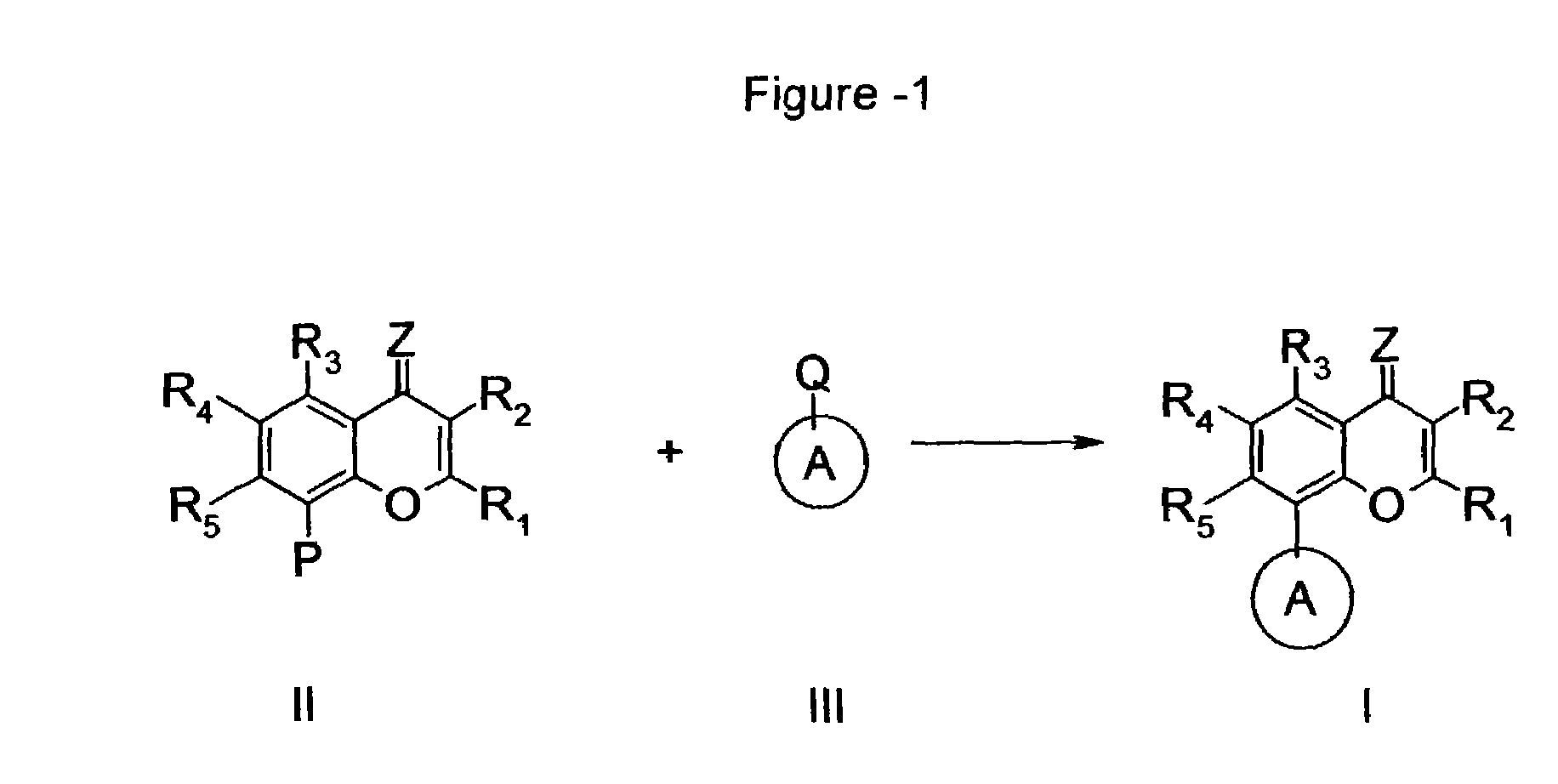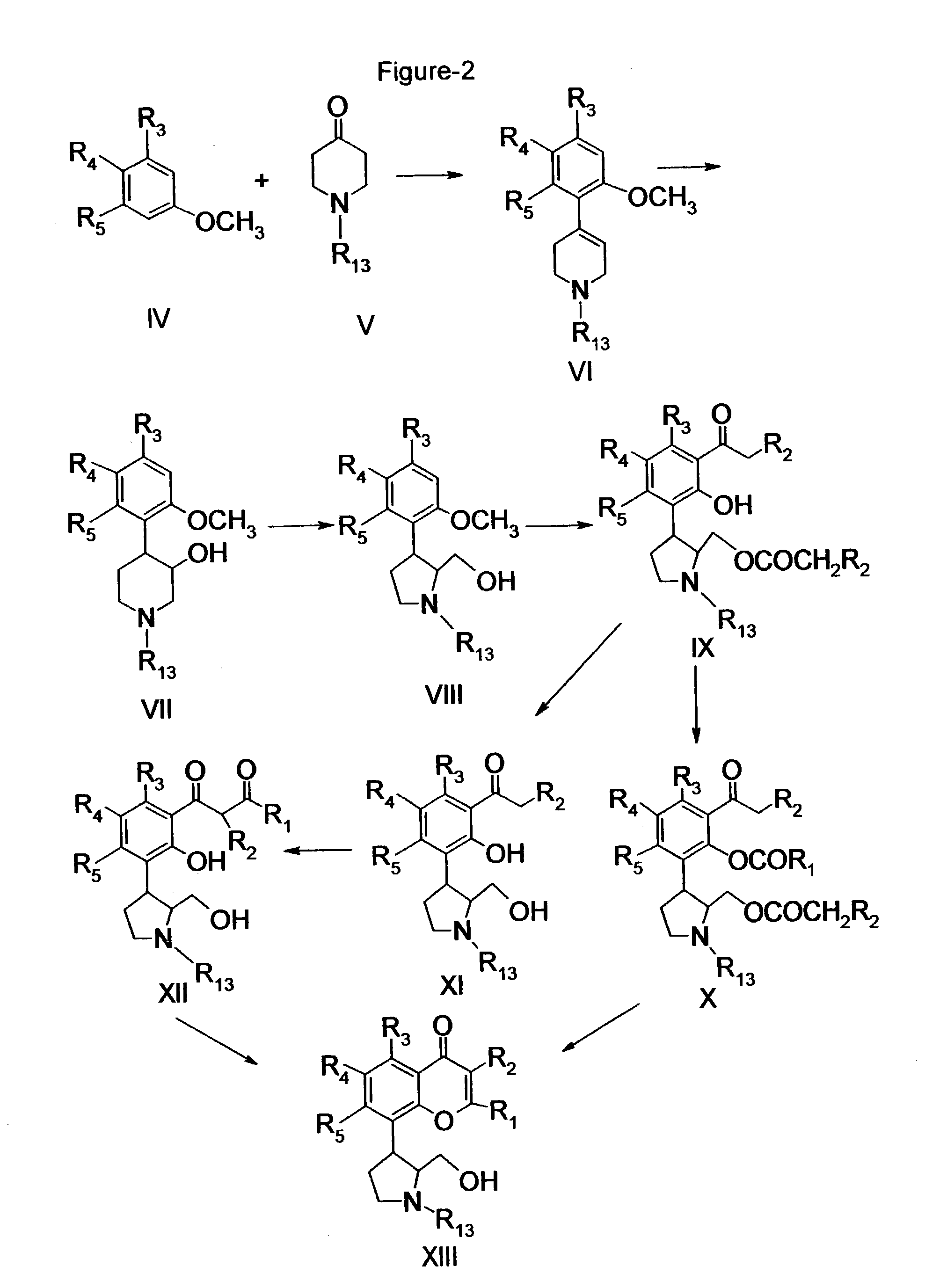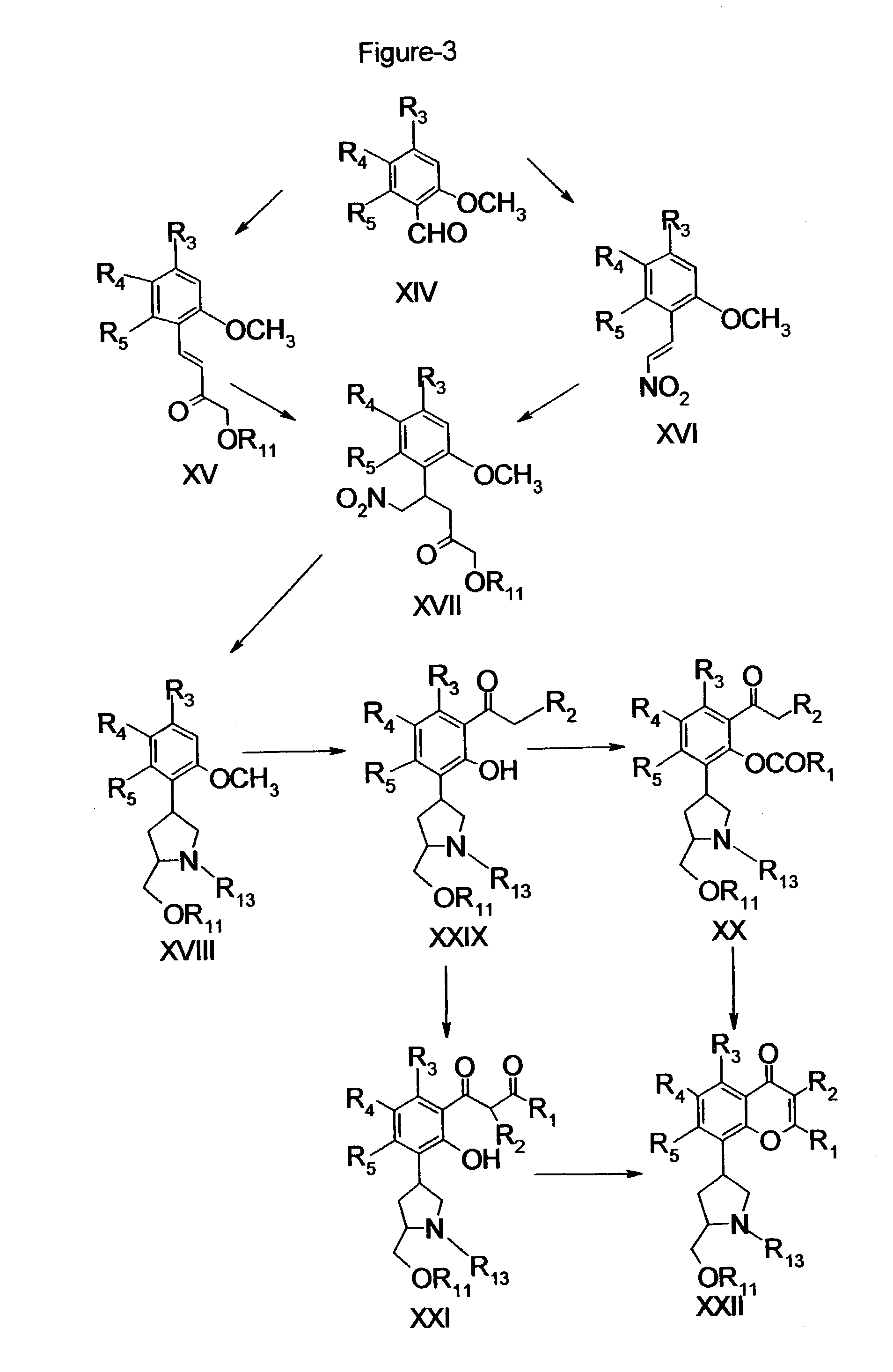Inhibitors of cyclin-dependent kinases and their use
a cyclin-dependent kinase and inhibitor technology, applied in the field of inhibitors of cyclin-dependent kinases, can solve the problems of contributing to uncontrolled cell proliferation, and achieve the effect of preventing dedifferentiation of such cells and preventing excessive proliferation of eukaryotic cells
- Summary
- Abstract
- Description
- Claims
- Application Information
AI Technical Summary
Benefits of technology
Problems solved by technology
Method used
Image
Examples
example 1
1-Methyl-4-(2,4,6-trimethoxy-phenyl)-1,2,3,6-tetrahydro-pyridine
[0448](Compound No. 1)
[0449]1-methyl-4-piperidone (340 g, 3×103 mmol) was added slowly, to a solution of 1,3,5-trimethoxy benzene (500 g, 2.976×103 mmol) in glacial acetic acid (600 mL), maintaining the temperature of the reaction mixture below 40° C. Concentrated HCl (450 mL) was added over 20 min. The temperature was raised to 85-90° C. and the reaction mixture was stirred for 3.5 h. It was allowed to cool to 40° C., poured over crushed ice (4 kg) and stirred for 20 min. The precipitated unreacted 1,3,5-trimethoxy benzene was filtered off. The filtrate was basified, at below 10° C., to pH 11-12 using a 50% aqueous NaOH solution. The off white solid(1) obtained was filtered, washed with water and dried.
[0450]Yield: 580 g (74%).
[0451]mp: 117-119° C.
[0452]IR cm−1 :1600, 2800.
[0453]1HNMR (CDCl3): δ 6.15 (s, 2H), 5.55 (s, 1H), 3.75 (s, 6H), 3.85 (s, 3H), 3.1 (d, 2H), 2.55 (t, 2H), 2.4 (s, 3H), 2.35 (s, 1H), 2.0 (s, 1H).
[04...
example 2
(+ / −)-trans-1-Methyl-4-(2,4,6-trimethoxy-phenyl)-piperidin-3-ol
[0455](Compound No. 2)
[0456]Boron trifluoride etherate (300 mL, 2.37 mol) was added slowly with stirring, under an atmosphere of nitrogen, at 0° C., to a solution of compound (1) (300 g, 1.14×103 mmol) and NaBH4 (75 gm, 1.97×103 mmol) in dry THF (2.25 L). The temperature of the reaction mixture was slowly raised to 55° C. and it was stirred for 1.5 h. It was cooled to 30° C. Ice cold water (100 mL) was slowly added followed by acidification with concentrated HCl (375 mL). The reaction mixture was stirred for 1 h at 50-55° C. It was cooled to 30° C. and basified using 50% aqueous NaOH solution to pH 11-12. Hydrogen peroxide (30%, 225 mL) was added over 0.5 h. The reaction mixture was stirred at 55-60° C. for 1.5 h. It was cooled to 30° C. and sufficient water added to dissolve the precipitated salts. The organic layer was separated and the aqueous portion extracted with EtOAc (2×1 L). The organic extracts were dried (anhy...
example 3
(+ / −)-trans-Acetic acid 1-methyl-3-(2,4,6-trimethoxy-phenyl)-pyrrolidin-2-ylmethyl ester (Compound No. 3)
[0462]Distilled triethyl amine (344 mL, 2.49×103 mmol) was added slowly to a solution of compound(2) (350 g, 1.25×103 mmol) in dry CH2Cl2 (2.5 L). To the reaction mixture methanesulfonyl chloride (122 mL, 171.1 g, 1.49×103 mmol) was added with stirring, at 0° C., under an atmosphere of N2 and over a period of 20 min. The reaction mixture was further stirred for 1 h at 0° C. It was poured over saturated aqueous NaHCO3 solution (1.5 L). The organic layer was separated, washed with brine, dried (anhy. Na2SO4) and concentrated to obtained the O-mesylated derivative. It was dissolved in distilled isopropyl alcohol (1.5 L), anhydrous sodium acetate (408 g, 4.97 mmol) was added and the reaction mixture was refluxed for 1 h. It was cooled to room temperature. Sodium acetate was filtered off and washed with CHCl3. The filtrate was concentrated to obtain the title compound (3), which was p...
PUM
| Property | Measurement | Unit |
|---|---|---|
| Digital information | aaaaa | aaaaa |
Abstract
Description
Claims
Application Information
 Login to View More
Login to View More - R&D
- Intellectual Property
- Life Sciences
- Materials
- Tech Scout
- Unparalleled Data Quality
- Higher Quality Content
- 60% Fewer Hallucinations
Browse by: Latest US Patents, China's latest patents, Technical Efficacy Thesaurus, Application Domain, Technology Topic, Popular Technical Reports.
© 2025 PatSnap. All rights reserved.Legal|Privacy policy|Modern Slavery Act Transparency Statement|Sitemap|About US| Contact US: help@patsnap.com



